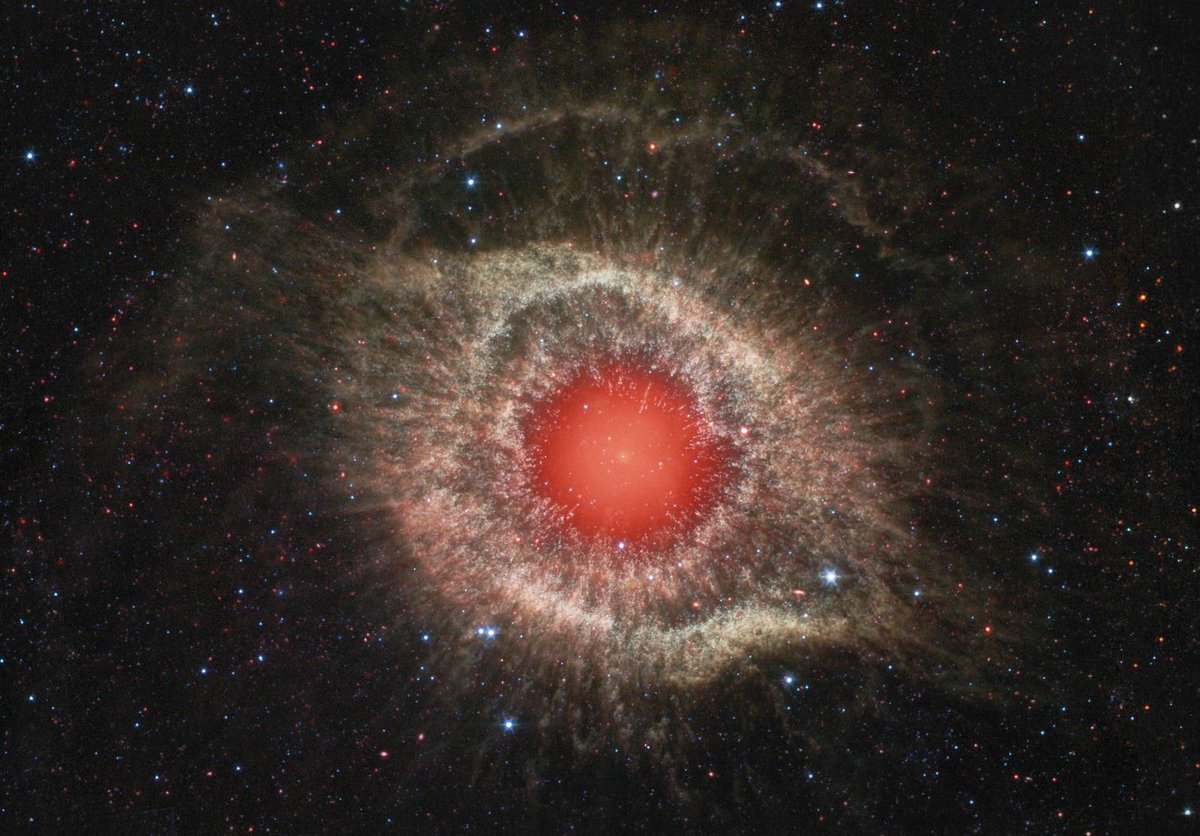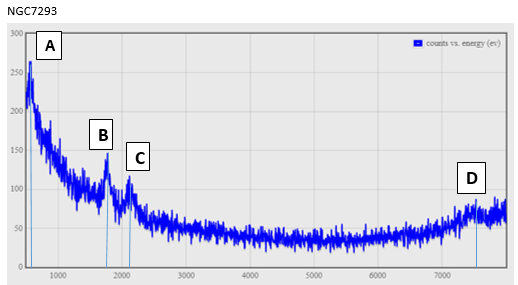NGC 7293
It is one of the planetary nebulae closest to Earth and was discovered by Karl Ludwig Harding before 1824. This nebula is an example of a planetary nebula formed by a star similar to the Sun in the last stages of its life. The remaining star is turning into a white dwarf. The age of the nebula is estimated at approximately 10,600 years. Here you can find more information.
Here you can find more information.
This is the spectrum that I obtained from JS9 and Chandra Archieves:

Peak A obtains nitrogen
PeaK B obtains scandium
Peak C obtains selenium
Peak D obtains Europium
The total area it is of 3731614.6
Pick A area = 1343301 so-------- 
Pick B area = 3266057----------
Pick C area = 2620457----------
Pick D area = 2166498---------
The results are:
3.6% of nitrogen
8.75% of scandium
7% of Selenium
5.8% of Europium
I have been investigating some scientists articles and I read here that the largest amount it's of Carbon. I haven't found that element during my invesigation, but in fact, that doesn't say at all that my investigations are wrong. I haven't found more chemical elements so I don't now if the rest of them are okey.
Obra publicada con Licencia Creative Commons Reconocimiento Compartir igual 4.0